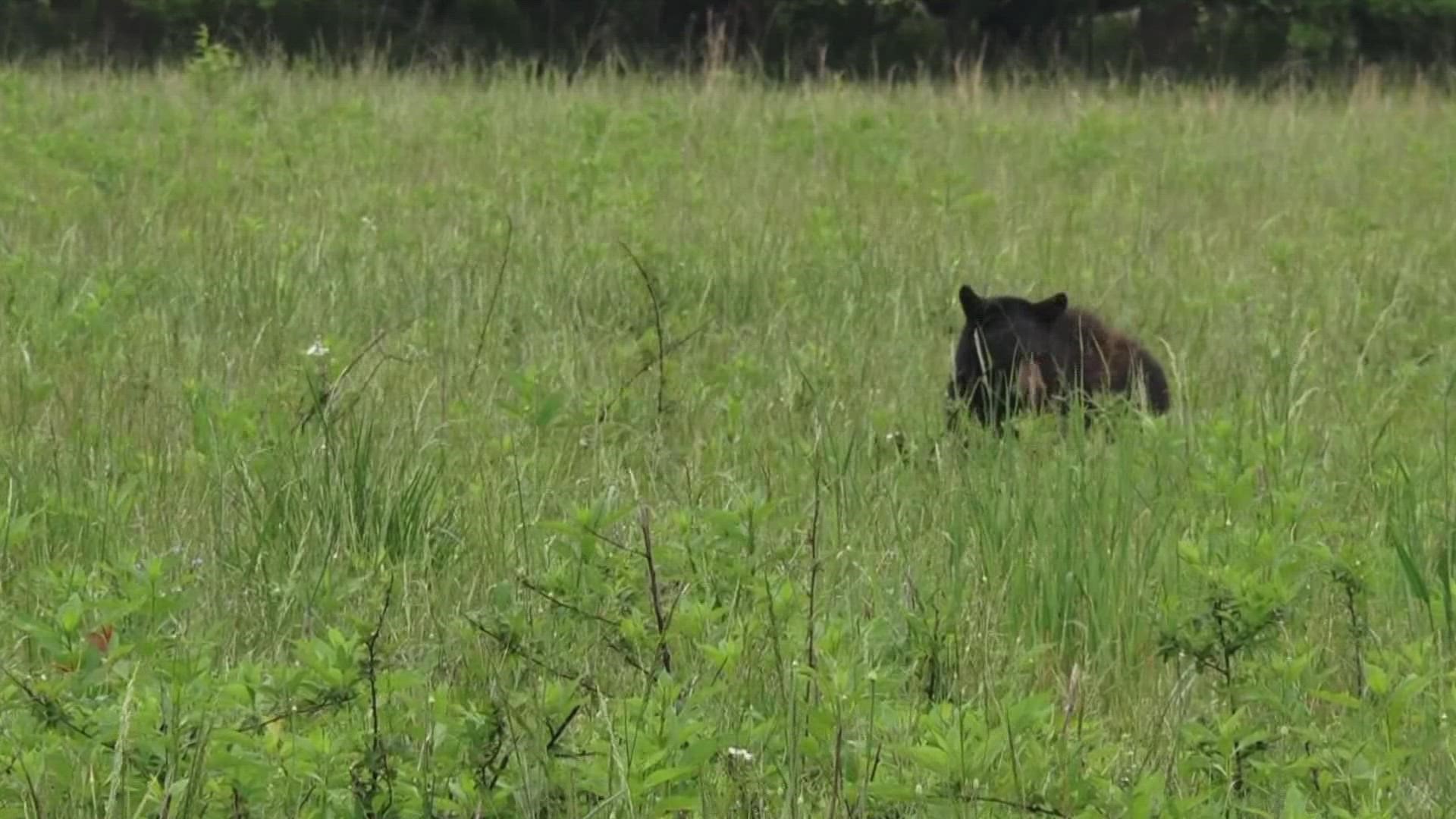Great Smoky Mountains Natl. Park — Update (May 31, 2023)
The Great Smoky Mountains National Park said bear 609 is alive and well and has been hanging out in the national forest, about 20 miles from where they released her. Over the winter, she had her radio collar replaced while she denned. She doesn't have any cubs.
Original Story (December 13, 2022)
Around six months ago, a female black bear was relocated from the Great Smoky Mountains National Park. The bear was reported to be eating food off picnic tables, stealing backpacks and sniffing trash cans.
She was taken to the South Cherokee National Forest in Polk County, Tennessee, with a GPS collar that tracked her movements as part of a study the park was conducting on relocated bears.
The goal of the study was to understand what was happening to bears that were relocated outside of the park. Before the study, GSMNP believed a small portion of relocated bears were hit by cars or harvested, and many returned back to their original home base.
"74% we weren't sure what happened to them," said Bill Stiver, a wildlife biologist with the GSMNP.
They have collared bears for around 40 years since the start of this specific study including the female bear relocated to the Cherokee National Forest — number 609. She has been the most interesting bear of the bunch.


Wildlife biologists found that she traveled 1,000 miles across Georgia, South Carolina and North Carolina before returning to Tennessee. She eventually crossed I-40 and returned to the Great Smoky Mountains, ending up at the same campsite she was captured from.
"This was definitely one of the most bizarre movements I've seen so far," said Bill Stiver, one of the wildlife biologists who tracked her. "She never slowed down. She just kept on going"
The bear didn't stop at the campground, either. She wandered back to Alpharetta, Georgia, and found some fame. News outlets in that area spotted her picking through trash and wandering a mall in the area.


"This bear actually got hit by a car in Georgia, but it didn't kill her," said Stiver.
She finally ended her journey somewhere near Cherokee. Stiver said they have not received data from her for around two weeks, but the park believes she is still alive.
After the journey to Alpharetta, the bear ventured up into the Anderson, South Carolina area. That's where family members of a GSMNP employee got to see the bear in action.
"This particular bear had a personal connection with some of my family members," said Lisa Mcinnis, the Chief of Resource Management and Science.
"My boss's brother got this picture, and it was taken in his neighborhood," Stiver said.


"They live in Anderson, South Carolina, and my brother showed me a picture of the bear. I asked Bill, 'Do we have a bear in this general area?' And he said, 'We sure do,'" Mcinnis said.
Sure enough, it was the bear — number 609.
"It's a very, very small world," Mcinnis said.
The whole study has fascinated Bill. He said he checks the maps daily to monitor new activity. It's taught wildlife biologists a lot about bears.
"The big picture is about two-thirds of the bears that were moving are dead in about four months, and that's kind of preliminary data. And we got one more year of research," Stiver said.
The park said her journey is the longest distance that the park has ever seen from a bear. Before this bear set the record, another bear had walked around 215 miles in 2020.
Stiver wants people to know that the park does not want to have to euthanize or relocate bears.
"When bear's behavior escalates to a certain level, there are not many options left, either move them or euthanize them and for years we have moved them," Stiver said.
However, one thing people can do to make the Smokies a safer place for humans and wildlife is to be BearWise.
The Great Smoky Mountains also urged people to stay "BearWise" and take steps to prevent bears, and visitors in the park, from getting hurt. Below are six tips to stay BearWise:
- Stay alert and stay together
- Leave no trash or food scraps
- Keep dogs leashed
- Camp safely, away from dense cover and natural food sources
- Do not approach bears if you see one
- Carry bear spray and learn how to use it

